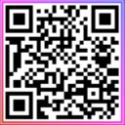Posted on February 18, 2025
Bitcoin Core Development Team
Bitcoin Core development involves a collaborative effort from a diverse group of developers who contribute to the maintenance and improvement of the Bitcoin protocol. Here’s a list of some key Bitcoin Core developers along with their primary functions, based on recent information:
Wladimir J. van der Laan (laanwj) – Former lead maintainer who has significantly influenced Bitcoin Core’s development. He stepped down from his role in February 2023 but has been instrumental in code reviews, bug fixes, and overall software maintenance.
Marco Falke (MarcoFalke) – One of the most prolific contributors, focusing primarily on testing. He joined in 2016 and has been involved in improving the robustness of the codebase through extensive testing.
Michael Ford (fanquake) – Responsible for overseeing the build system of Bitcoin Core. He became a maintainer in 2019 after the CoreDev meeting and has been involved since 2012.
Hennadii Stepanov (hebasto) – He focuses on network processing, interface, building, checking, and testing control. He’s supported by grants for his contributions to Bitcoin Core.
Andrew Chow – Part of the maintainer team, involved in various aspects of code maintenance and development, particularly after Wladimir van der Laan’s departure.
Gloria Zhao – She writes and reviews code that governs Bitcoin’s transaction validation process, being the only woman on the maintainers’ team at the time of the last update.
Pieter Wuille (sipa) – Known for significant contributions like Segregated Witness (SegWit), his work involves improving the protocol’s efficiency and security.
John Newbery (jnewbery) – Previously involved in code maintenance, he has moved on from direct involvement but was notable for his contributions to improving the codebase.
Samuel Dobson (meshcollider) – Former maintainer who handled protocol security and wallet maintenance. He announced his departure in 2021 to pursue other interests.
Jonas Schnelli – Was involved in maintaining the codebase, particularly the wallet, but left his role in 2021 citing increasing legal risks for developers.
Russ Yanofsky, Suhas Daftuar, Alex Morcos, Carl Dong – These developers have been funded by organizations like Chaincode Labs for their contributions to Bitcoin Core, focusing on various aspects from protocol improvements to testing.
Matt Corallo (TheBlueMatt) – Known for his work on the Bitcoin network’s performance and security, though his involvement has varied over time.
John Atack, Vasil Dimo – Both have been sponsored by Square Crypto to work on Bitcoin Core, focusing on proposing and implementing upgrades.
Other developers like Russ Yanofsky, Suhas Daftuar, Alex Morcos, Carl Dong, John Atack, and Vasil Dimo are likely still contributing, but their exact roles might evolve or shift based on project needs, personal interests, and funding availability.
This list is not exhaustive, as Bitcoin Core development is open-source, allowing anyone to contribute. Over time, roles can shift, and new developers might join or leave the project. The functions mentioned here are based on historical roles and might not reflect their current status or involvement.
For the most up-to-date information, one should refer to the latest Bitcoin Core GitHub repository activities or developer announcements. Remember, the decentralized nature of Bitcoin means that no single entity controls it, and all significant changes require community consensus.







 Bitcoin
Bitcoin  Ethereum
Ethereum  Tether
Tether  XRP
XRP  Dogecoin
Dogecoin  Bitcoin Cash
Bitcoin Cash  Monero
Monero  Zcash
Zcash  Litecoin
Litecoin  Wrapped SOL
Wrapped SOL  PAX Gold
PAX Gold